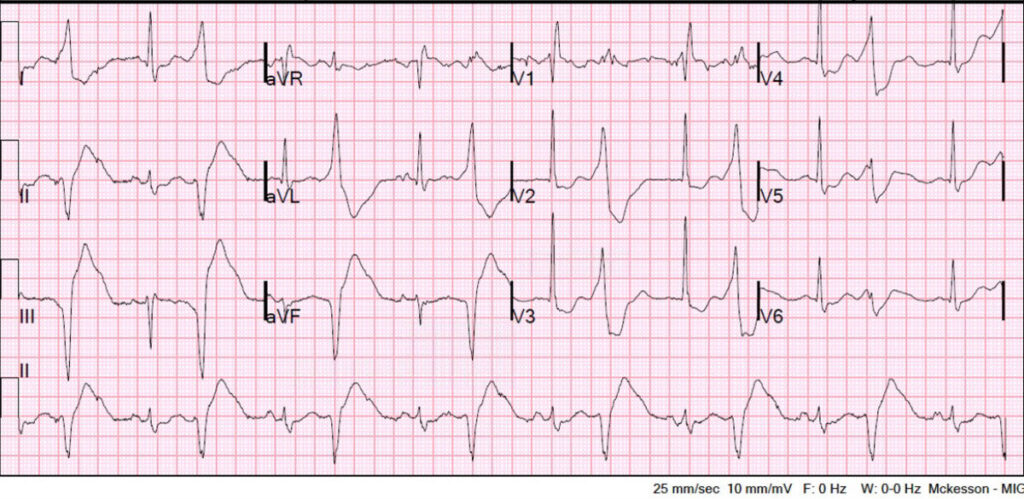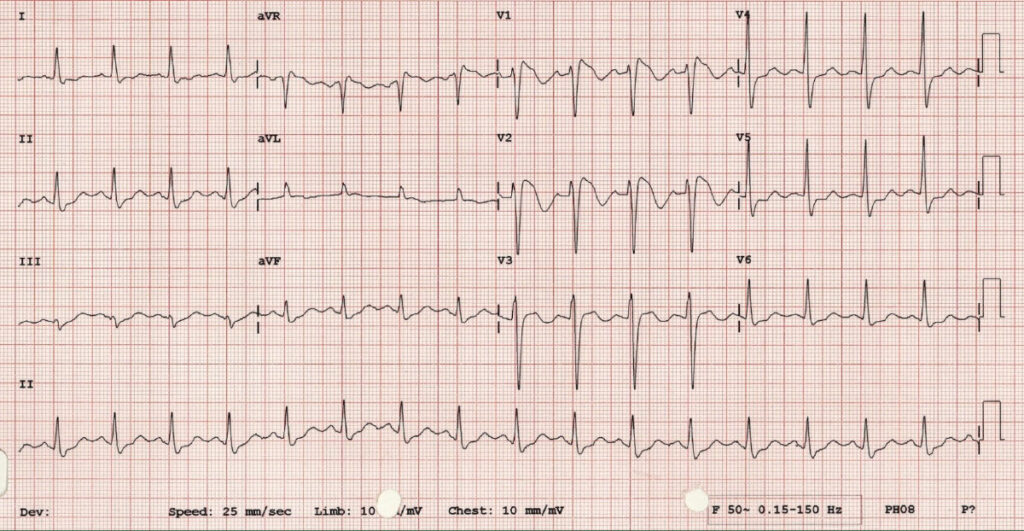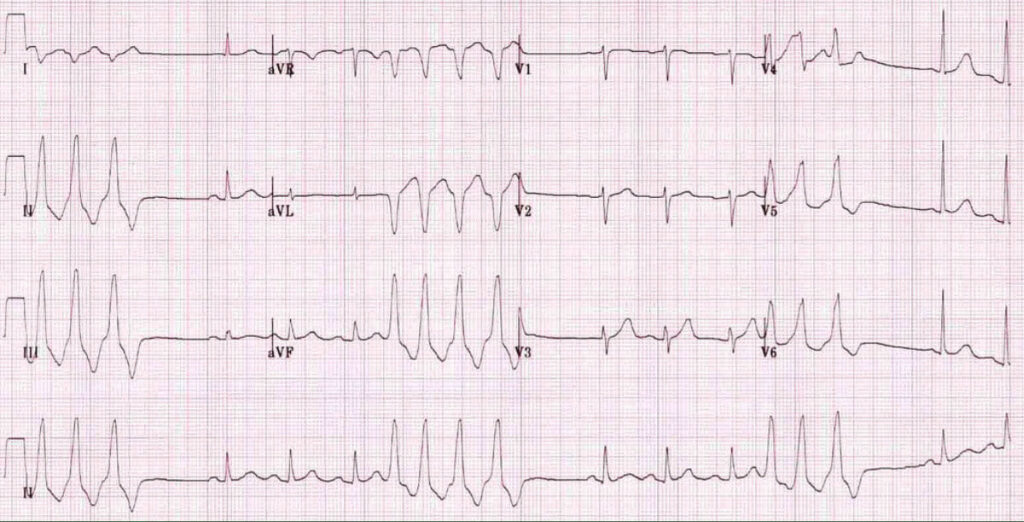Dr Yassir Javaid, GPwSI in cardiology and echocardiography, asks what these ECGs could signify.
Question 1
What does this ECG show?

A Ventricular bigeminy
B Ventricular trigeminy
C Supraventricular bigeminy
D Ventricular tachycardia
E Brugada
Answer Ventricular bigeminy
Explanation
There are clearly extra QRS complexes that are of different morphology compared to the QRS complexes with preceding p waves, ie, the sinus beats. The extra QRS complexes are broader and bigger indicating ventricular ectopics. They occur after every sinus beat which is called bigeminy.
Question 2
A 34-year-old man of Japanese ethnicity asks to have an ECG performed as part of an insurance medical. His father died in his sleep at the age of 40.

The ECG would prompt you to:
A Refer to Cardiology OP
B Reassure the patient (findings on ECG are normal variant)
C Arrange an open access echocardiogram
D Arrange an open access echocardiogram and holter
E Dial 999 for acute admission
Answer Refer to Cardiology OP
Explanation
This is an ECG abnormality with a high incidence of sudden cardiac death (SCD) in patients with structurally normal hearts. It’s known as Brugada syndrome and the most common type involves ‘coved’ (like a ski slope) ST elevation in leads V1-V2 and sometimes V3.
Common in south east Asia (Sudden Unexplained Nocturnal Death Syndrome).
Most common in Thailand, Japan and Philippines.
Average age of death 41.
Suspect if a young patient has symptoms such as syncope at rest (unlike most other predispositions for malignant arrhythmias, eg, long QT).
Most SCDs occur at rest, eg, ‘die in their sleep’.
Should avoid high temperatures, eg, hot baths / sauna or prolonged exercise.
Definitive treatment involves an ICD.
Question 3
An 80-year-old gentleman presents to your surgery feeling increasingly breathless. He has a previous history of ischaemic heart disease and CABG. He has lost consciousness yesterday without warning. His ECG is presented below.

The appropriate course of action would be to:
A Refer to RACPC
B Refer to Cardiology OP
C Organize a 24-hour holter
D Organize an echocardiogram
E Arrange urgent admission to secondary care
Answer Arrange urgent admission to secondary care
Explanation
Any patient with a history of significant structural or ischaemic heart disease presenting with palpitations should be carefully assessed as there is a higher risk of malignant ventricular arrhythmias. Other red flags include the presence of associated syncope or presyncope or an exertional relationship which again increases the likelihood of the presence of ventricular arrhythmias.
In this ECG we can essentially see episodes of three or more consecutive ventricular ectopics which is technically ventricular tachycardia, albeit non sustained. In the context of syncope and significant underlying coronary disease, this warrants urgent admission for consideration of ICD. These episodes of VT can progress to longer episodes or even degenerate to VF.
Pulse October survey
Take our July 2025 survey to potentially win £1.000 worth of tokens













